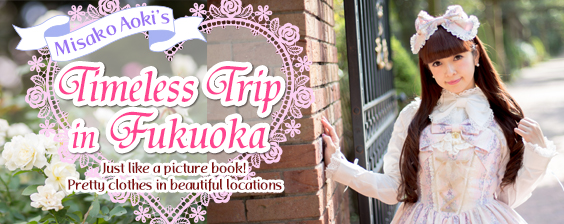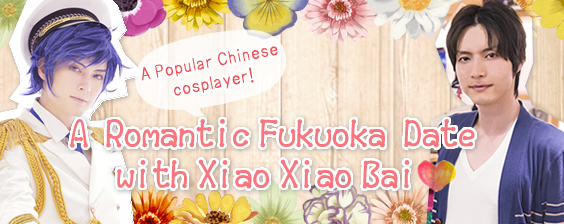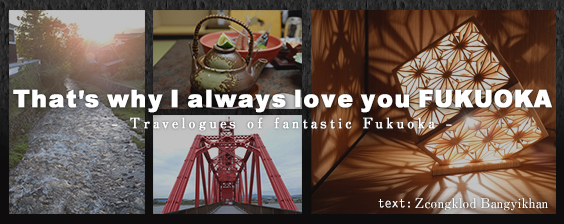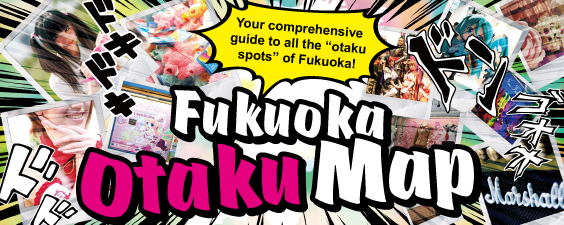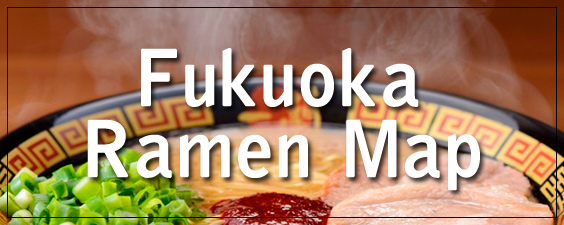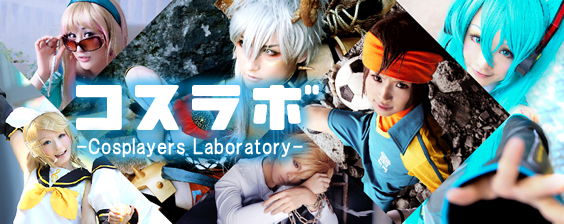- Home
- Ayaka Wada(ANGERME) presents "...
- Ayaka Wada (ANGERME) presents ...
Ayaka Wada (ANGERME) presents "Ukiyo-e" Vol.05 Toshusai Sharaku "Actor Otani Oniji 3rd as the yakko Edobei"
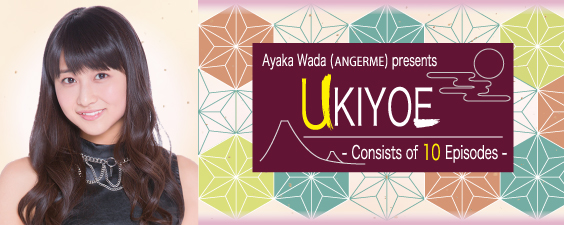
What Makes a Famous Painting a Famous Painting?
Have you ever looked over a painting by a famous artist on display at an art gallery or art exhibition and found yourself wondering this? Do we look at these paintings with such appreciation because the artist is famous and has received praise from people around the world? Famous paintings are famous because society and all the textbooks and guidebooks tell us so. That’s basically it. And whenever I look at paintings by artists who didn’t receive any acclaim while they were alive, like Van Gogh and Rousseau, I wonder why people at the time couldn’t understand their works.
But then I wonder if I saw these paintings at the time they were painted, could I still assess them the same way I do now? A good way to go about painting appreciation is to study art history first. After studying art history, I too found myself liking paintings more and more.
But then I wonder if I saw these paintings at the time they were painted, could I still assess them the same way I do now? A good way to go about painting appreciation is to study art history first. After studying art history, I too found myself liking paintings more and more.
People back in those days, though, at the times when these now famous works were painted, didn’t know anything about the future to come. Sadly, both Van Gogh and Rousseau both passed away without receiving widespread acclaim for their works, but the situation was basically the same for the people around them, too. There’s no way anyone would have predicted that Van Gogh and Rousseau would go on to become core figures of the art world and be listed in all the school textbooks and guidebooks.
Sharaku, the ukiyo-e artist featured in this article, is another such person.
Sharaku is the most mysterious artist in the world of ukiyo-e art, and it wasn’t until many years later that his works received the overwhelming praise that they garner today. I doubt that anyone in Edo could have imagined that one day, one of the works that people would call to mind when they thought of ukiyo-e paintings would be “Actor Otani Oniji 3rd as the yakko Edobei.”
By trying to appreciate “Actor Otani Oniji 3rd as the yakko Edobei” in the same way that the people of that era would have done, and not as the famous artwork that appears in all the textbooks and guidebooks, I found that I was able to make several new discoveries.
Sharaku, the ukiyo-e artist featured in this article, is another such person.
Sharaku is the most mysterious artist in the world of ukiyo-e art, and it wasn’t until many years later that his works received the overwhelming praise that they garner today. I doubt that anyone in Edo could have imagined that one day, one of the works that people would call to mind when they thought of ukiyo-e paintings would be “Actor Otani Oniji 3rd as the yakko Edobei.”
By trying to appreciate “Actor Otani Oniji 3rd as the yakko Edobei” in the same way that the people of that era would have done, and not as the famous artwork that appears in all the textbooks and guidebooks, I found that I was able to make several new discoveries.

"Actor Otani Oniji 3rd as the yakko Edobei"
Sharaku’s Debut Match: a Swing and a Miss
Ukiyo-e is wonderful, Japanese art! That’s how people feel about ukiyo-e now, but the creators of these works at the time didn’t think of them so much as works of art as they did business opportunities. Jūzaburō Tsutaya was the man who produced the works of Utamaro Kitagawa, but as Utamaro’s star status took him further and further out of reach, the next star that Tsutaya set his eyes upon was Sharaku.
So Utamaro thinks he can ignore me, huh? Fine, then I’m going to find me a new artist – that’ll knock the wind out of his sails! I wonder if that’s how it went down?
In 1794 Sharaku made his debut with a 28-print kabuki actor series done in the okubi-e portrait-style and produced by Jūzaburō Tsutaya. It sounds just like an idol debut, don’t you think? I think Jūzaburō Tsutaya probably had high expectations for him too. He seemed pretty confident. He wouldn’t go so far as to publish a 28-print kabuki actor collection straight off the bat if he wasn’t. But it didn’t go exactly as planned and ended for Jūzaburō Tsutaya with a swing and a miss. Sharaku’s work received mixed reviews and the 28-print collection didn’t sell as expected apparently. A shock this big would have sent the people of the era into a panic I’m sure.
The so-called famous Sharaku’s works were comprised almost entirely in this 28-print collection, and in the end the Jūzaburō Tsutaya/Sharaku alliance were pressured to change their painting style. Unfortunately, though, that didn’t work out well for them either. And so, Sharaku just disappeared and his life and true identity remain shrouded in mystery. It seems kind of ironic then that in the end only his earliest works would come to be acknowledged and appreciated in the later years to come.
So Utamaro thinks he can ignore me, huh? Fine, then I’m going to find me a new artist – that’ll knock the wind out of his sails! I wonder if that’s how it went down?
In 1794 Sharaku made his debut with a 28-print kabuki actor series done in the okubi-e portrait-style and produced by Jūzaburō Tsutaya. It sounds just like an idol debut, don’t you think? I think Jūzaburō Tsutaya probably had high expectations for him too. He seemed pretty confident. He wouldn’t go so far as to publish a 28-print kabuki actor collection straight off the bat if he wasn’t. But it didn’t go exactly as planned and ended for Jūzaburō Tsutaya with a swing and a miss. Sharaku’s work received mixed reviews and the 28-print collection didn’t sell as expected apparently. A shock this big would have sent the people of the era into a panic I’m sure.
The so-called famous Sharaku’s works were comprised almost entirely in this 28-print collection, and in the end the Jūzaburō Tsutaya/Sharaku alliance were pressured to change their painting style. Unfortunately, though, that didn’t work out well for them either. And so, Sharaku just disappeared and his life and true identity remain shrouded in mystery. It seems kind of ironic then that in the end only his earliest works would come to be acknowledged and appreciated in the later years to come.
The Origin of the Strange Face?
For the people of Edo, kabuki actors were their heroes, their superstars. Just like how people in these days collect bromide photos (commercial photographic portraits of celebrities) of idols and actors, the people in Edo, too, would buy paintings of kabuki actors. So then what was it that compelled Sharaku to paint such off-the-wall okubi-e portraits? Is that what producer Jūzaburō Tsutaya wanted? Even so, don’t you think these paintings go a little too far? If I were to compare them to photos of idols, it would be like if 28 CDs suddenly went on sale and the CD jackets were all of photos taken mid-concert and all of them were of the idols caught in awkward moments, making strange faces. But 28 all at once – that’s a debut by one superstar-class new comer.
He made Utamaro a star and now Jūzaburō Tsutaya presents his next superstar, “Sharaku”! Ukiyo-e 28-print simultaneous release!
This is what I imagine the headlines would have read. On another note, apparently the actors who were the models for Sharaku’s ukiyo-e paintings weren’t very popular either. It makes me think of those distorted works by caricature artists.
Ahh, that guy! If it’s a famous person everyone knows their face but in these paintings they don’t look cool or attractive in any way whatsoever. The artist basically takes the part of that person’s face that stands out the most and they overdraw and exaggerate it. But they really have a good grasp on those standout features, so just about anyone will know who it is straight away.
I would hate to be drawn like that, though. Whenever I see works like that I think to myself, ‘I would hate be drawn this way.’ I think the actors and their fans that saw Sharaku’s paintings back in the day probably would have thought the same. Why don’t you make them look more attractive? That’s the kind of thing I imagine people saying. Were Jūzaburō Tsutaya and Sharaku unable to predict the kind of reaction people would have? The difference between these and the ukiyo-e by Utamaro Kitagawa is beyond great. I wonder if Tsutaya wasn’t having a dig at Utamaro by working with Sharaku – someone with a completely different style of painting to Utamaro.
But whether he factored that into his thinking or not, he boldly produced this set of 28 okubi-e kabuki actor prints, and because he did, the later generations and we today are able to enjoy these new frontiers of ukiyo-e art regardless of the modern setting. Art history really is fascinating.
He made Utamaro a star and now Jūzaburō Tsutaya presents his next superstar, “Sharaku”! Ukiyo-e 28-print simultaneous release!
This is what I imagine the headlines would have read. On another note, apparently the actors who were the models for Sharaku’s ukiyo-e paintings weren’t very popular either. It makes me think of those distorted works by caricature artists.
Ahh, that guy! If it’s a famous person everyone knows their face but in these paintings they don’t look cool or attractive in any way whatsoever. The artist basically takes the part of that person’s face that stands out the most and they overdraw and exaggerate it. But they really have a good grasp on those standout features, so just about anyone will know who it is straight away.
I would hate to be drawn like that, though. Whenever I see works like that I think to myself, ‘I would hate be drawn this way.’ I think the actors and their fans that saw Sharaku’s paintings back in the day probably would have thought the same. Why don’t you make them look more attractive? That’s the kind of thing I imagine people saying. Were Jūzaburō Tsutaya and Sharaku unable to predict the kind of reaction people would have? The difference between these and the ukiyo-e by Utamaro Kitagawa is beyond great. I wonder if Tsutaya wasn’t having a dig at Utamaro by working with Sharaku – someone with a completely different style of painting to Utamaro.
But whether he factored that into his thinking or not, he boldly produced this set of 28 okubi-e kabuki actor prints, and because he did, the later generations and we today are able to enjoy these new frontiers of ukiyo-e art regardless of the modern setting. Art history really is fascinating.
Related Articles
 Ayaka Wada(ANGERME) presents "Ukiyo-e" Vol.01 Harunobu Suzuki "Couple Under Umbrella in the Snow"
Ayaka Wada(ANGERME) presents "Ukiyo-e" Vol.01 Harunobu Suzuki "Couple Under Umbrella in the Snow"Harunobu Suzuki was the first superstar of the ukiyo-e technique known as nishiki-e.
Nishiki-e developed through advances in polychrome woodblock printing techniques and is a style of ukiyo-e that layers multiple colors on top of each other.
 Ayaka Wada(ANGERME) presents "Ukiyo-e" Vol.05 Toshusai Sharaku "Actor Otani Oniji 3rd as the yakko Edobei"
Ayaka Wada(ANGERME) presents "Ukiyo-e" Vol.05 Toshusai Sharaku "Actor Otani Oniji 3rd as the yakko Edobei"Have you ever looked over a painting by a famous artist on display at an art gallery or art exhibition and found yourself wondering this? Do we look at these paintings with such appreciation because the artist is famous and has received praise from people around the world? Famous paintings are famous because society and all the textbooks and guidebooks tell us so.
 Ayaka Wada (ANGERME) presents "Ukiyo-e" Vol.10 Eizan Kikugawa "Fashionable Decorations for the Five Seasonal Festivals: Iris Festival"
Ayaka Wada (ANGERME) presents "Ukiyo-e" Vol.10 Eizan Kikugawa "Fashionable Decorations for the Five Seasonal Festivals: Iris Festival"After almost a year of its serialization, we’ve now reached the final installment in the “Ukiyo-e” series. I’ve seen all various kinds of ukiyo-e prints over this year, and for me, Edo has become a period in history that I can now really relate to.
 Interview with Ayaka Wada to Celebrate the Launch of her New Book, “Rediscovering Japan Through Art” (ODYSSEY BOOKS INC.) – Ayaka Wada (ANGERME) X Takamasa Sakurai (Producer)
Interview with Ayaka Wada to Celebrate the Launch of her New Book, “Rediscovering Japan Through Art” (ODYSSEY BOOKS INC.) – Ayaka Wada (ANGERME) X Takamasa Sakurai (Producer)Following on from her 2014 publication that shed a fresh new light on the fine art book industry, “Otome no Kaiga Annai” (PHP Shinsho), on the 12th of March 2016, ANGERME idol group leader, Ayaka Wada, will release her second book, entitled, “Bijutsu de Meguru Nippon Saihakken ~ Ukiyoe, Nippon-ga kara Butsuzou made” (Rediscovering Japan Through Art: From Ukiyo-e and Japanese Paintings, to Buddhist Sculptures) (ODUSSEY BOOKS INC.).
Columnist: Ayaka Wada (ANGERME)
 Ayaka’s looks and style have seen her grace the covers of multiple magazines and gravure publications. She likes art and Western paintings, particularly the works of Rembrandt and Édouard Manet. She studies art history at university and has recently developed an interest in Japanese Buddhist sculptures and paintings. She even has her own “shuincho” (seal stamp book) and is currently collecting stamps from all the temples she visits around Japan. Ayaka discusses paintings in her monthly serialization, she is the author of the book “Otome no Kaiga Annai” (Maiden’s Guide to Paintings), and she also performs with Riho Sayashi (Morning Musume。 ) in the two-girl unit, Peaberry, which was formed alongside the SATOYAMA movement: a movement which has also begun expanding their activities to include art field as well.
Ayaka’s looks and style have seen her grace the covers of multiple magazines and gravure publications. She likes art and Western paintings, particularly the works of Rembrandt and Édouard Manet. She studies art history at university and has recently developed an interest in Japanese Buddhist sculptures and paintings. She even has her own “shuincho” (seal stamp book) and is currently collecting stamps from all the temples she visits around Japan. Ayaka discusses paintings in her monthly serialization, she is the author of the book “Otome no Kaiga Annai” (Maiden’s Guide to Paintings), and she also performs with Riho Sayashi (Morning Musume。 ) in the two-girl unit, Peaberry, which was formed alongside the SATOYAMA movement: a movement which has also begun expanding their activities to include art field as well.Author of: "Otome no kaiga annai"
http://shuchi.php.co.jp/article/1846
This comment section is for readers to leave opinions and comments. Inappropriate comments may be deleted, so please remember to be respectful. Thank you!
 Measures and provisions are being taken at various locations in an effort to prevent the spread of the new coronavirus.
Measures and provisions are being taken at various locations in an effort to prevent the spread of the new coronavirus.





